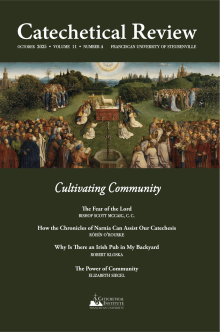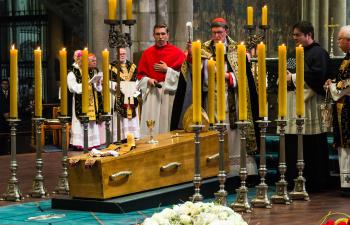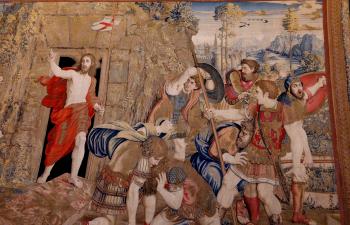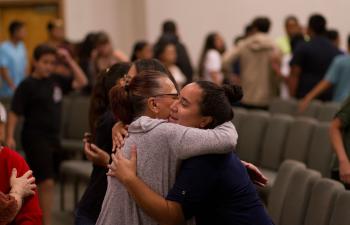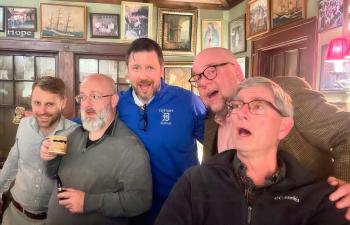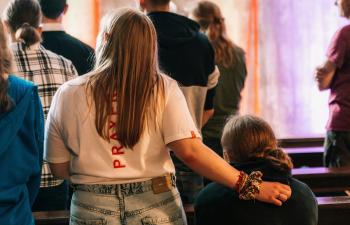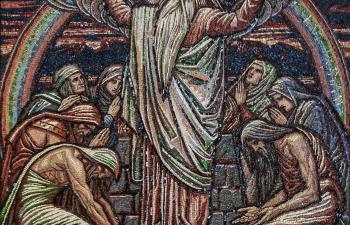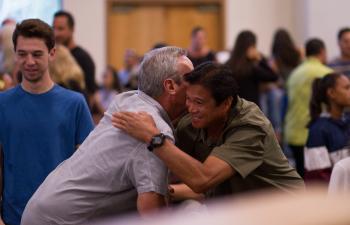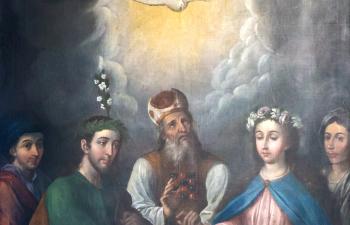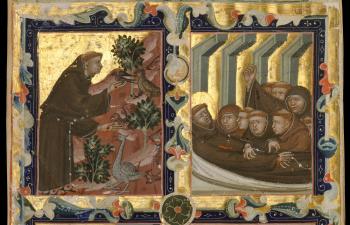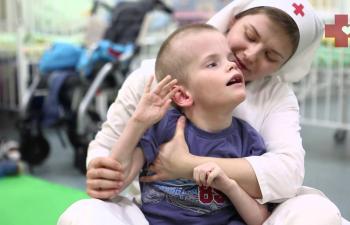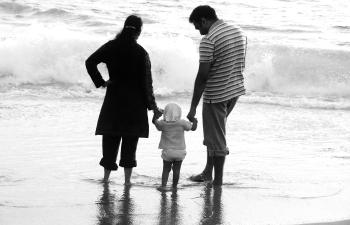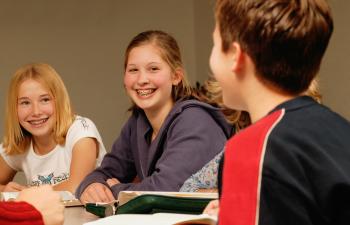 “Is it time for Narnia yet?” The beseeching eyes of my seven and eight-year-old students implored me to say a definitive yes. Smiling, I set my teacher’s book aside and picked up my copy of The Lion, the Witch and the Wardrobe. In an instant, the children were sitting in front of me, eagerly awaiting the next installment of the seven-book fantasy series penned by C. S. Lewis.
“Is it time for Narnia yet?” The beseeching eyes of my seven and eight-year-old students implored me to say a definitive yes. Smiling, I set my teacher’s book aside and picked up my copy of The Lion, the Witch and the Wardrobe. In an instant, the children were sitting in front of me, eagerly awaiting the next installment of the seven-book fantasy series penned by C. S. Lewis.
It was 2022. I was on the cusp of leaving teaching to enter a monastery, and as a parting gift to my students, I had decided to read the Chronicles of Narnia aloud to them over the course of a few months. Why? I firmly believed that in years to come, their memories of this series could potentially ignite embers of faith in their hearts or even fan them vigorously into flame. Yes, the language can be old-fashioned in parts; yes, some may recoil at the traditional gender roles or turns of phrase; and yet, there is something so delightfully compelling about these stories. Fans can easily relate, for instance, to what Kurt Bruner and Jim Ware describe as a “delicious” combination of pleasure and nourishment: “Both the dreams of fairyland and the promise of heaven invade the imagination at the same time, baptizing it with wonderful and unexpected effects.”[1]
The Catechetical Power of Fairy Tales
Recognition of the power of quality literature and story in stirring or deepening faith is not a new phenomenon. C. S. Lewis, for instance, attributed one of the keystones of his eventual conversion to reading George MacDonald’s Phantastes. Steeped in rich spiritual overtones, this story features a young man named Anodos whose desire for “fairy country,” kindled upon reading a fairy tale, stirs him to embark on a perilous yet delightful journey through an enchanted wood.[2] Notably, as David Downing outlines, Anodos becomes more attuned to the natural world around him and discovers within himself a “capacity for simple happiness.”[3] From a catechetical point of view, there is an almost Edenlike quality to this. Thomas Howard, for instance, alludes to it when he describes Narnia as the “forgotten country” residing deep in the inner sanctum of our imagination. Similarly, Joseph Pearce highlights our inclination to forget the divine image in which we were made and, hence, the heavenly homeland to which we truly belong.[4] Our natural longing for God and heaven, planted in us at the dawn of our existence, can be easily buried by the clutter and chaos of life.
Fairy tales can awaken this longing within us and reconnect us, paradoxically, with what is truly real. For instance, Lewis found himself enchanted by what he describes as the “quality of the real universe” found in MacDonald’s fantasies.[5] They seemed to prompt an enhanced appreciation of the hidden, illustrious qualities of the world around him or, in his words, “the divine magical, terrifying and ecstatic reality in which we all live.”[6] This parallels Joseph Pearce’s claim that, far from one’s immersion in a good story constituting a diversion from reality, it is instead a delightful reversion to it.[7] The good “magic” of fairyland, he says, has a sacramental quality: the capacity to reflect heavenly realities to us and provide us with a lens through which we can perceive them.[8] Moreover, one can be both delighted and caught off guard by talking animals, fauns, centaurs, unicorns, and personified trees, and thus more receptive to the truths behind them. If, like Lucy, one of the major heroines of the series, we “see” with the humility and purity of a child, we may in fact be granted a “fleeting glimpse of Eden.”[9]
For adults, however, the many concerns and fast-paced nature of life can stifle our natural capacity for wonder and thus counteract this manner of “seeing.” When we consider, as the Directory for Catechesis outlines, that many sacramental recipients or aspirants have not actually experienced an explicit encounter with Christ and therefore are often unacquainted with the deep power and warmth of the faith, we can ponder the possibility of a disconnect between intellect and imagination.[10] As important as knowledge about Christ and the Church is, it is not enough to recall facts. We need to be immersed in the wonder of it all, to stand in awe of this divine spark within us, the luminous reality of which we are part, and the glorious destiny to which we are called. As such, before the work of catechesis can achieve its desired end of deeper and enduring intimacy with Christ, one of its preliminary tasks may be to unearth and kindle our capacity and natural longing for wonder. One possible avenue is the use of quality literature in catechesis, which opens up a whole world of possibility.
The rest of this online article is available for current Guild members.
[1] Kurt Bruner and Jim Ware, Finding God in the Land of Narnia (Tyndale, 2005), 4, Kindle.
[2] David Downing, The Most Reluctant Convert: C. S. Lewis’s Journey to Faith (Wipf and Stock, 2004), 66, Kindle.
[3] Downing, Most Reluctant Convert, 66.
[4] Thomas Howard, Narnia & Beyond: A Guide to the Fiction of C. S. Lewis (Ignatius Press, 1987), 29, Kindle; Joseph Pearce, Further Up & Further In: Understanding Narnia (TAN Books, 2018) 22. Bruner and Ware, Finding God in the Land of Narnia, 11.
[5] Downing, Most Reluctant Convert, 66–67.
[6] Ibid.
[7] Pearce, Further Up & Further In, 27.
[8] Ibid, 22.
[9] Pearce, Further Up & Further In, 22.
[10] See Pontifical Council for the New Evangelization, Directory for Catechesis (USCCB, 2020), no. 56.
[11] C. S. Lewis, Prince Caspian (Harper Collins, 2001), 150.
[12] Lewis, Prince Caspian, 152.
[13] Thomas Williams, The Heart of the Chronicles of Narnia: Knowing God Here by Finding Him There (Thomas Nelson, 2005), 32.
[14] Pearce, Further Up & Further In, 13.
[15] G. K. Chesterton, Orthodoxy (B&H Academic, 2022), 79, Kindle.
[16] Pearce, Further Up & Further In, 26.
[17] Williams, The Heart of the Chronicles of Narnia, 36.
[18] Bruner and Ware, Finding God in the Land of Narnia, 3.
[19] Bruner and Ware, Finding God in the Land of Narnia, 4–5.
[20] C. S. Lewis, The Voyage of the Dawn Treader (Harper Collins, 2001), 271.
[21] Bruner and Ware, Finding God in the Land of Narnia, 5–6.
[22] John Paul II, Catechesi Tradendae, no. 5.
[23] Directory for Catechesis, no. 76.
[24] Bruner and Ware, Finding God in the Land of Narnia, 5.
[25] C. S. Lewis, The Lion, the Witch and the Wardrobe (Harper Collins, 2001), 137.
[26] Ibid, 139.
[27] Benedict XVI, Spe Salvi, 47
[28] Ibid.
[29] Lewis, The Lion, the Witch and the Wardrobe, 140.
[30] Williams, The Heart of the Chronicles of Narnia, 10.
[31] See Directory for Catechesis, nos. 80, 83.
[32] See Directory for Catechesis, no. 84.
[33] Williams, The Heart of the Chronicles of Narnia, 39.
[34] C. S. Lewis, The Magician’s Nephew (Harper Collins, 2001), 194.
[35] Bruner and Ware, Finding God in the Land of Narnia, 24.
[36] Lewis, The Lion, the Witch and the Wardrobe; The Voyage of the Dawn Treader.
[37] Lewis, The Magician’s Nephew.
[38] Pearce, Further Up & Further In, 22; Howard, Narnia & Beyond, 29.
Art Credit: The Lion [CS Lewis Square Commemorating The Belfast Born Author], William Murphy, Flickr.com.
This article originally appeared on pages 59 - 70 of the print edition.
This article is from The Catechetical Review (Online Edition ISSN 2379-6324) and may be copied for catechetical purposes only. It may not be reprinted in another published work without the permission of The Catechetical Review by contacting [email protected]


